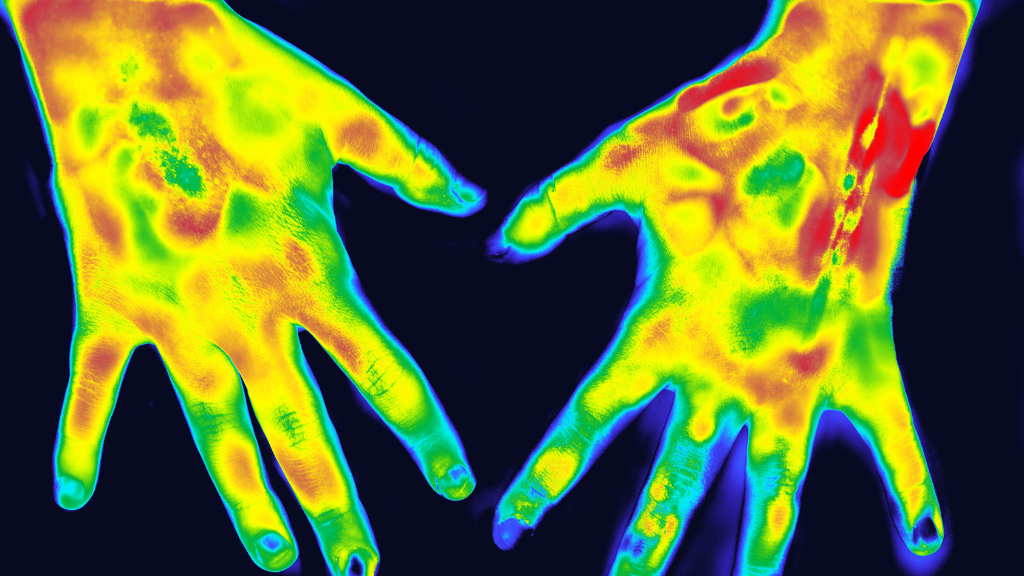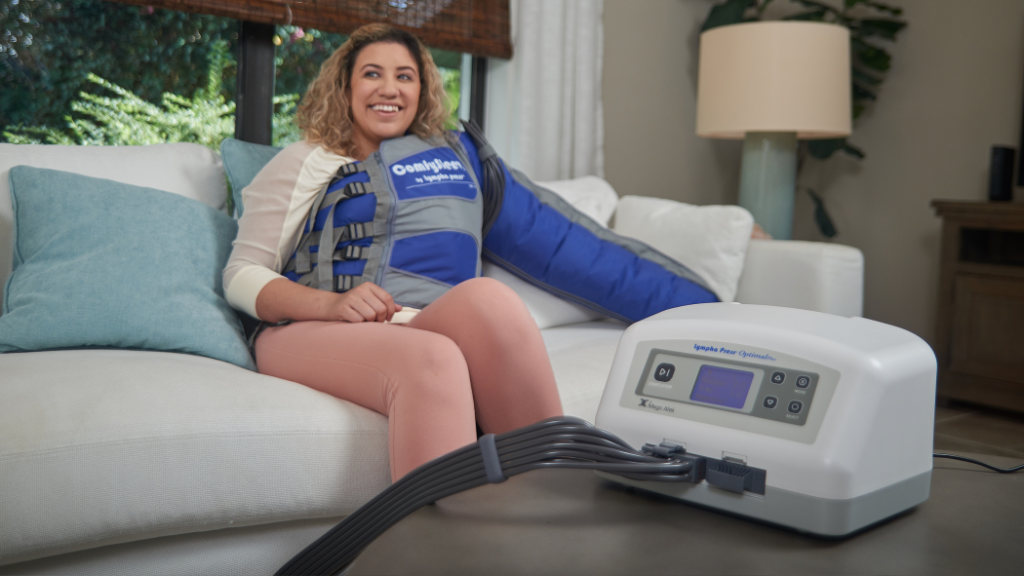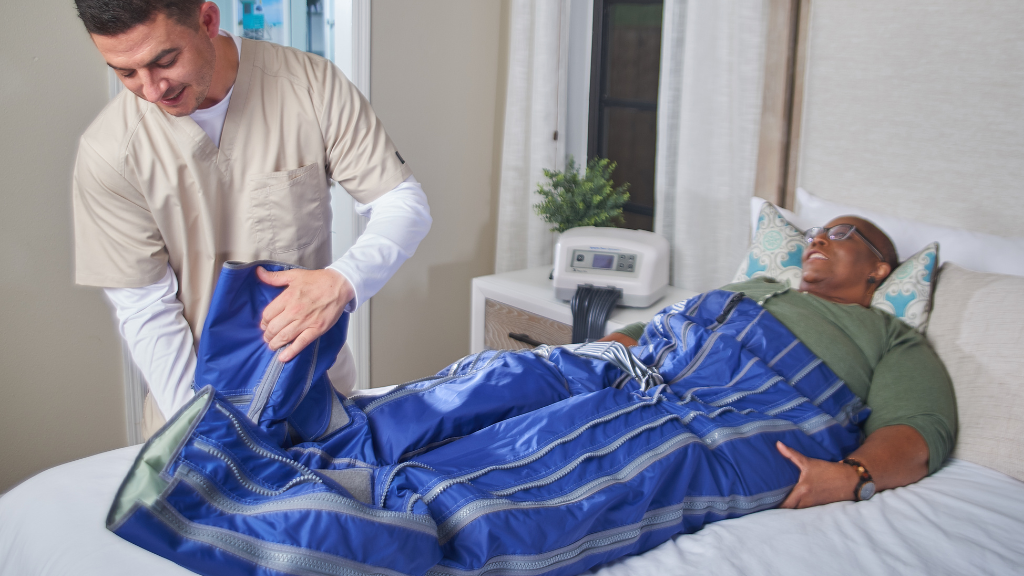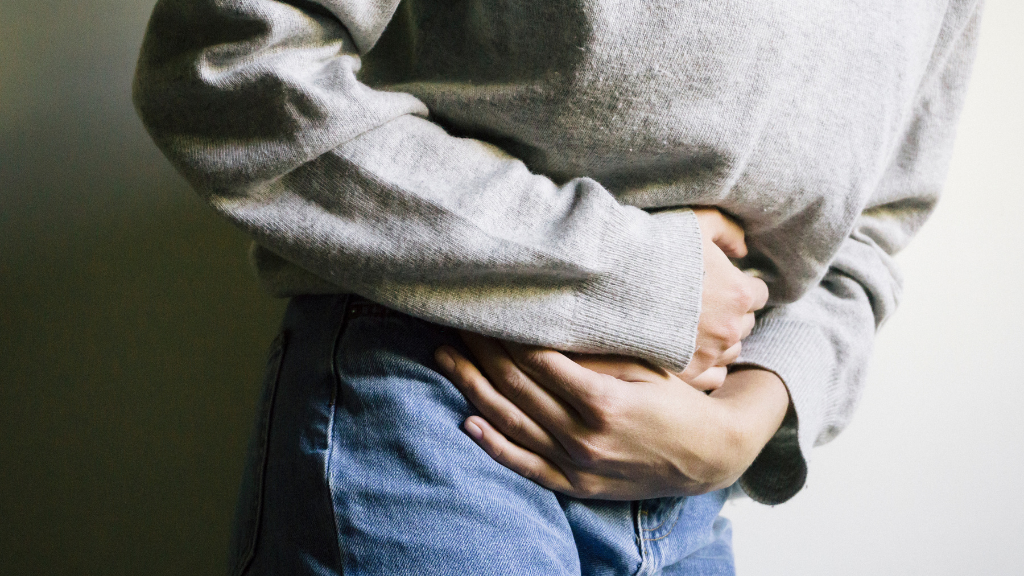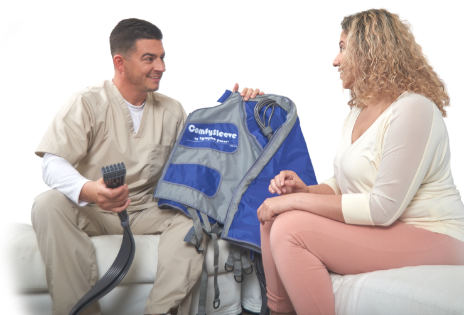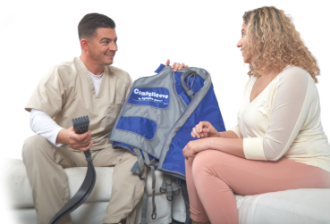By Karen L. Herbst, M.D., Ph.D.
This is a 15-minute read.
Patients who develop lipedema discover that their tissue is hypersensitive and easily bruised. It’s difficult for patients to lose lipedema fat through dieting, exercising, or bariatric surgery — no matter how hard they try. The location of lipedema tissue is linked to sex hormones, and there may be a genetic component or predisposition involved.
Think of lipedema as a systemic disease. Muscle function is reduced in people with lipedema, and fibrosis tends to occur in the loose connective tissue. Therefore, the muscle is trapped within a fibrotic cage and can’t function normally. People with lipedema have reduced lymphatic pumping, which is why clinicians promote deep tissue therapy instead of using manual lymphatic drainage alone.
This article examines cutting-edge insights into the minds of people who have lipedema. We’ll also introduce what’s known as the matrix — the physiological structure lipedema takes within the body, plus its resulting impact on a patient’s thought processes and lifestyle.
Helping Patients Understand What’s Happening in Their Bodies
When patients arrive at my office for the first time, they often say their legs and arms feel extremely heavy and achy. They have a feeling of weight and tightness in their limbs that’s hard for them to describe. They express how it never seems to go away completely.
This is what lipedema feels like at stage zero to stage one, and it can be similar to lymphedema. It may present as swollen ankles or even simply as a feeling of heaviness after riding in the car or on an airplane. The skin may be pitted or not pitted, and the swelling or feeling of heaviness may resolve on its own with elevation or sleeping.
By stage two, the swelling and other symptoms are no longer resolving with elevation or by resting overnight. Because the symptoms persist, the patient is now somewhat more likely to seek a doctor’s input and diagnosis.
At stage three, there are more fat deposits, which can be accompanied by an overgrowth of the skin.
When we give these patients quality of life questionnaires, we can see a distinct difference between patients with lipedema and lymphedema in terms of their pain. This helps us tease apart the differences between the two diseases diagnostically, although they do occur together. When lipedema occurs with lymphedema, we call it lipo-lymphedema.
Making the Crucial Mind-Body Connection
Too often, clinicians observe patients physically or through photographs and do them a disservice by focusing exclusively on the body. We need to think more about the mind-body connection because the mind and body of a person with lipedema are intimately intertwined.
We know that a person’s body chemistry and biology impact their mood. For example, monthly menses impact a woman’s mood and emotions and can even impact her thought processes and belief system. When someone worries and stresses about things, it can cause their muscles to tense up, leading to pain in the form of headaches and stomach problems.
One study found that symptoms like fat tissue pain, joint pain, muscle stiffness, muscle pain, heaviness, and swelling increase the risk of the development of depression. In turn, this leads to a decrease in quality of life.
This leads to a question: How common is depression comorbid with lipedema? Some estimates show a strong link, with up to 35% of women with lipedema having depression and close to 30% having anxiety. There might even be more, depending on how researchers are asking about anxiety and depression. I think this area deserves much more research.
It’s also important to look at the concept of interpersonal sensitivity. By definition, interpersonal sensitivity is the elevation of awareness or sensitivity to the behavior and feelings of others. There may be a high sensitivity to perceived or actual criticism or rejection, as with a person commonly called a highly sensitive person or an empath.
There’s a medical questionnaire known as the Symptom Checklist-90 Revised, or the SCL-90-R, which evaluates a wide range of psychological problems and symptoms of psychopathology. The questionnaire is quite good at determining whether a person has interpersonal sensitivity, and when you compare people with lipedema and lymphedema, both men and women, the outcome was that women with lipedema had more psychological symptoms.
This implies that interpersonal sensitivity may be a source of depression and anxiety in women with lipedema. I participated in a published study that found that women with lipedema often have joint hypermobility syndrome, or hypermobile Ehlers-Danlos syndrome, and are up to 16 times overrepresented among those with panic or anxiety disorders.
To put it another way, anxiety is highly linked to hypermobile joints and hypermobility and is also linked to stress-sensitive psychosomatic disorders. This includes disorders like irritable bowel syndrome, fibromyalgia, chronic fatigue and is also associated with hypersensitivity to the sensation of pain.
In addition, consider the issue of psychosocial stress. We’ve all been experiencing psychosocial stress during a global pandemic. It’s the psychological influence of the surrounding environment, including what’s going on around you, your physical and mental wellness, and your ability to function considering your psychosocial stress factors. When we perceive psychosocial threats in our lives, real or imagined, we discern that coping may require resources we don’t have.
In terms of lipedema, patients face many challenges. Living with lipedema brings psychosocial stressors, including chronic pain, the knowledge of having a progressive disease, and physical mobile impairments. The person may have trouble finding clothing and shoes that fit comfortably. The activities of their daily life, like swimming or going out with friends, could be severely limited.
There’s also a higher potential for illnesses like obesity, lymphedema, cellulitis, and arthritis. Plus, there’s the financial impact. The person may experience limitations at work or might need accommodations like the ability to elevate their feet. Their healthcare costs could rise significantly, and they may have to travel a long distance to reach a lipedema doctor because these providers can be few and far between.
A person with lipedema may think, “Will I be bedridden? Will I have to use a wheelchair?” They may experience emotions like despair, embarrassment, self-judgment, and self-blame. It can be an emotional rollercoaster for them as they attempt to cope with having lipedema yet feel powerless to change their situation. This is intense psychosocial stress.
Symptoms May Arise from Deep Within the Body
On top of the physical and psychological factors discussed above, additional processes are happening within the body to impact how someone experiences lipedema. Patients may not be actively aware of these processes but experience effects on the quality of their lives.
For example, Dr. Sean Hill, the director of the Center for Neural Informatics in Canada, has concluded that there is no clear biological understanding of depression yet. We can identify it, but fundamentally, we don’t understand what it is.
Surprisingly, a new paper that came out this year has shown that depression raises inflammation in the body. Perhaps the symptoms of lipedema can lead to depression, which raises inflammation markers in the body.
People with major depression have elevated CRP levels, or C-reactive protein, which participates in inflammation and repair. Inflammation may be present in depression because it’s a core biological component. When you have depression, you have inflammation that’s part of the activation of stress-related molecular pathways.
What Salamanders Can Teach Us About Lipedema
There’s help for lipedema on the horizon, and some of this help can be found in unexpected places. For example, there is a salamander called an axolotl. When injured, axolotls can regenerate their body parts using macrophages.
Some studies have shown that women with lipedema who don’t have obesity also have elevated macrophages. This means it’s not just obesity causing the rise in macrophages because, in the absence of obesity, it’s still inherent in the lipedema tissue.
A researcher envisioned using a topical hydrogel at the site of a wound laced with a modulator that changes the behavior of human macrophages to be more like those of an axolotl. Instead of causing a scar to form, the macrophages would instead regenerate and heal the tissue.
Can you imagine a lipedema patient being able to apply a cream at night that makes their tissue feel better in the morning? Wouldn’t that be wonderful? I’m very excited to follow this and other intriguing advances in lipedema research.
Lipedema, Inflammation, and the Immune System
As discussed earlier, depression is interrelated with inflammation and lipedema. It’s my opinion that inflammatory diseases can contribute to the development and progression of lipedema tissue.
These diseases may also include allergies to the environment and food, mast cell activation disease, inflammatory vein disease, psoriasis, non-lipedema obesity, and even having a period every month. Other inflammatory conditions include prediabetes, trauma, sleep apnea, surgery, or a car accident.
I think we need to not only focus on the inflammation within the tissue itself but also on the whole person who may have other inflammatory conditions that could influence the tissue. When someone is stressed, this leads to a stimulation of the corticotropin, which releases hormones from the hypothalamus that then activate the pituitary to secrete a substance that goes to the adrenal gland, thereby secreting cortisol and suppressing the immune system.
At the same time, stress activates the sympathetic and parasympathetic nervous systems. The sympathetic nervous system is pro-inflammatory whereas cortisol is anti-inflammatory. With an overload of stress over time, the adrenal glands become fatigued, and cortisol levels drop, leading to increased inflammation from the sympathetic nervous system.
Ultimately, mast cells release histamine, which causes swelling, and the patient experiences inflammation and swelling within their body. This creates a direct link between stress and swelling.
Final Thoughts About Advances in Lipedema Research
There are many new concepts in lipedema diagnosis and treatment, and I’ll openly admit that I may not be entirely right about every aspect of my perspective on lipedema. There’s still so much to learn, and there’s been an enormous amount of groundbreaking research in this field. I hope you can stay open-minded to the discoveries that are taking place.
If you have an idea regarding lipedema, or if you feel that you’ve come upon something new and interesting in your field of work, please feel free to email me and let me know. My goal is to always continue moving forward and improving treatment for lipedema patients.
About Dr. Herbst
Karen Herbst, M.D., Ph.D. is board-certified in endocrinology and has held faculty positions at Martin Luther King Drew Medical Center/UCLA, VA San Diego Health Care System/UCSD, and the University of Arizona. She won the Lifetime Achievement Award from Tucson Business and was named one of America’s top physicians. You may recognize her as the research physician on Mystery Diagnosis, featuring a man with Dercum’s Disease (The Man with 1,000 Lumps). Now retired, Dr. Herbst is currently pursuing a career in private practice and research where she is head of the standard of care committee for lipedema in the U.S. and is working with the CDC on ICD-10 codes for lipedema.
About Lympha Press
For more than 40 years, Lympha Press has been a proud provider of innovative compression pump home therapy equipment, including The Lympha Press Optimal Ⓡ Plus, which was the first pneumatic compression device cleared by the FDA for the treatment of lipedema in the United States. To learn more, please view the product gallery or call 1-800-734-0422.
References
Reich-Schupke S et al. S1 guidelines. J Dtsch Dermatol Ges. 2017;15(7):758–67.
Herbst K et al. Archives of Medicine 2015; 7: 1-8.
Herbst K in: Purnell J and Perreault L (eds) Endotext. Massachusetts: MDText.com, 2019.
Van Esch-Smeenge, J., R.J. Damstra, and A.A. Hendrickx, Muscle strength and functional exercise capacity in patients with lipoedema and obesity: a comparative study. Journal of Lymphoedema, 2017. 12(1): p. 27-31.
Angst et al. Health and Quality of Life Outcomes (2020) 18:245.
Dudek JA-O, Białaszek W, Gabriel M. Quality of life, its factors, and sociodemographic
characteristics of Polish women with lipedema. 2021(1472-6874 (Electronic)).
Kruppa et al. Dermatologic Therapy. 2020;33:e14534.
Herbst et al. PRS Global Open 2021.
Herbst et al. Medical Research Archives vol 7 issue 6.
Beltran and Herbst International Journal of Obesity (2017) 240 – 245.
Boyce P, Parker G: Development of a scale to measure interpersonal sensitivity. Aust N Z J
Psychiatry. 1989, 23: 341-351.
Angst et al. Health and Quality of Life Outcomes (2020) 18:245.
Kogler L, Müller VI, Chang A, et al. Neuroimage. 2015;119:235-51.
Ghanta S et al. Am J Physiol Heart Circ Physiol. 2015 May 1;308(9):H1065-77
Pitharouli, M.C., et al., Elevated C-Reactive Protein in Patients With Depression, Independent of Genetic, Health, and Psychosocial Factors: Results From the UK Biobank. Am J Psychiatry, 2021. 14(10).
Chobanyan-Jürgens K, Jordan J. Autonomic nervous system activity and inflammation: Good ideas, good treatments, or both? American Journal of Physiology. Heart and Circulatory Physiology. 2015;309(12): H1999-H2001.
Elenkov IJ, Wilder RL, Chrousos GP, Vizi ES. The sympathetic nerve–an integrative interface between two supersystems: The brain and the immune system. Pharmacological Reviews. 2000;52(4):595-638.
Pongratz G, Straub RH. The sympathetic nervous response in inflammation. Arthritis Research & Therapy. 2014;16(6):504.
Herbst, K.L., et al., Standard of Care for Lipedema in the United States. Phlebology
(accepted), 2021.
Karamanos and Theocharis. The FEBS Journal (2021).
P. Tozzi. Journal of Bodywork and Movement Therapies, vol. 16, no. 4, pp. 503–519, 2012.
Nakajima, H., et al., Scand J Plast Reconstr Surg. Hand Surg., 2004. 38(5): p. 261-6.
Pischinger A. The extracellular matrix and ground regulation. Eds. Heine H and Oschman JL. North Atlantic Books, Berkely, CA. 2004.
Pongratz G, Straub RH. The sympathetic nervous response in inflammation. Arthritis
Research & Therapy. 2014;16(6):504.
Herbst et al. Medical Research Archives vol 7 issue 6. June issue.
Critical Care 2006, 10:237 (doi:10.1186/cc5069).
Beldowski et al. Materials 2019, 12, 2060
Pischinger A. The extracellular matrix and ground regulation. Basis for a holistic biological medicine. Eds. Heine H and Oschman JL. North Atlantic Books, Berkely, CA. 2004.



